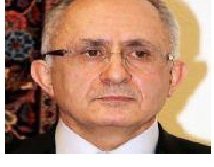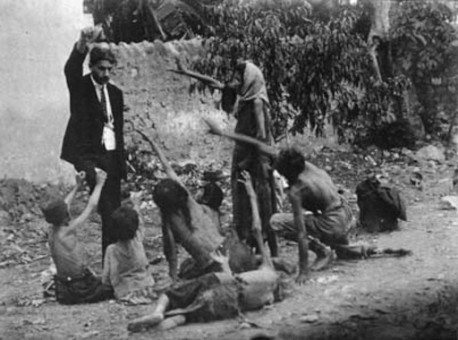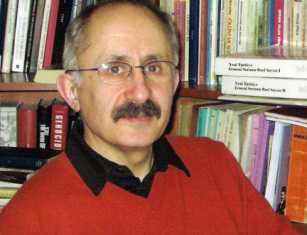
The expanded English edition of German sociologist Taner Akçam’s last book, The Young Turks’ Crime against Humanity. The Armenian Genocide and Ethnic Cleansing in the Ottoman Empire, was published in 2012 April. To analyze all the distortions, falsifications and other flaws of this book would mean writing a whole volume. However, some significant examples can be provided here.
Mr. Akçam alleges (p. 203) that “the clearest statement that the aim of the government’s policies toward the Armenians was annihilation is found in a cable of 29 August 1915 from Interior minister Talat Pasha to the province of Ankara.”
In fact, this telegram is mostly a list of interdictions of any violence against the displaced Armenians. Especially, the telegram says:
“The transfer of Armenians, which is desired to be carried out in an orderly and prudent manner, should henceforth never be left to the individuals having fanatical feelings of enmity and that the Armenians, whether or not subject to relocation, will be definitely protected against any assault and attack.”
The “military courts” were promised for the recalcitrant people (Hikmet Özdemir and Yusuf Sarınay, Turkish- Armenian Conflict Documents, Ankara, 2007, p. 235). Similarly, Mr. Akçam claims that the note of Minister of Interior Talat to Grand Vizier Sait Halim sent on May 26, 1915 “has never been completely translated into modern Turkish,” which is false (Özdemir & Sarınay, pp. 55-56; pp. 58-59 for the English translation). More seriously, Mr. Akçam alleges (pp. 136-137) that this document is “the clearest possible refutation of the official Turkish version of the events of 1915, which insists that the policies toward the Armenians were the result of the wartime exigencies. On the contrary, Unionist policy was aimed at resolving the issue of Armenian reforms in a definitive manner.”
To come to such a conclusion, Mr. Akçam cuts out several paragraphs of the document, which unequivocally present the relocation as measure decided chiefly because of “armed attacks on security forces and armed uprisings.”
For instance (my emphasis):
“Unfortunately, while the means to bring about a final solution to this problem [by reforms] is being worked out, some of the Armenians living in places close to the battlefields have recently become involved in activities aimed at creating difficulties for our army in its fight against the enemy to protect the Ottoman borders. Those Armenians are trying to impede the operations of the army, and the transfer of supply and ammunition. They are combining their aspirations and activities with those of the enemy’s and are fighting against us in the ranks of the enemy. Within the country, they dare to carry out armed attacks against the military forces and the innocent civilians, to become involved in acts of murder, looting and plundering in the Ottoman cities and towns, to provide supplies to the enemy’s navy and to inform them of the places with fortified posts.
The conduct of such rebel elements has rendered it necessary to remove them from the area of military operations and to evacuate the villages serving as operational bases and shelters for the rebels.”
The allusion to the reforms proposed in 1914 is only incidental and not the reason given by Talat for the relocation decision. Taner Akçam also removes the reference to the protection of relocated Armenians, especially this sentence:
“A decision has been taken to ensure the comfort of those subjects on their way to places allocated for their resettling. To ensure the subjects arrival at the resettlement places, and facilitate their rest, and protect of their live and properties on their journey.”
A third striking example of deliberate and serious distortion is the willing mistranslation (p. 208) of a telegram sent by the minister of Interior Talat to the governor Mehmet Reşit on July 12, 1915 (my emphasis):
“In Mardin the Armenian bishop and some 700 persons from among Armenian and other Christian population were taken outside the city and slaughtered like sheep by some persons arrived from Diyarbekır.”
Actually, the document says: “Particularly, from individuals sent from Diyarbakır recently, it has been learnt that in Mardin, a total of seven hundred people consisting of Armenians and other Christians, also including the bishop, had been taken from their houses at nights and killed by beheading like sheep.”

(Özdemir & Sarınay, p. 161). This document was published as early as 1995, with a transliteration. In 2007, a translation into modern Turkish and into English was published. In 2008, Yusuf Halaçoğlu
Taner Akçam’s mistranslation in the Turkish edition of the book. Regardless, it is maintained in the edition in English. Mr. Akçam does not refrain from relying on completely discredited material, like the “Andonian documents”
(pp. 268 and 272) and the so-called “Ten Commands” attributed to the CUP (p. 197). It has been proven since 1983 that the “Andonian documents” are fakes, and I devoted a 59-pages article to demonstrating it again (Maxime Gauin, “Aram Andonian’s Memoirs of Naim Bey and the Contemporary Attempts to Defend their‘Authenticity’”, Review of Armenian Studies, 23, 2011, pp. 233-292). It has been proven by Canadian historian Gwynne Dyer since 1973 that the “Ten Commands” are apocryphal, and were not taken seriously by the British authorities (Gwynne Dyer, “Correspondence,” Middle Eastern Studies, IX-3, 1973, pp. 378-379). Dr. Dyer replied to the pro- Armenian author Christopher Walker, who, having read the response, did never use the “Ten Commands” anymore.
Even worse, Mr. Akçam relies on the translation of this “document” by Vahakn Dadrian, who adds words (“commit massacres”) which are not actually in the “original” (on this point: Ferudun Ata, “An Evaluation of the Approach of the Researchers Who Advocate Armenian Genocide to the Trials Relocation,” in The New Approaches to Turkish-Armenian Relations, Istanbul: Istanbul University Publications, 2008, p. 560). Mr. Akçam also distorts material that is already questionable in itself, i.e., the partial accounts of trials which took place in İstanbul from 1919-1920. Mr. Akçam fails to explain how credible these tribunals were, and how they banned the right of cross-examination, the right to be assisted by a lawyer during the investigation and, from April to October 1920, the simple right to hire a lawyer. He fails to explain how the reliability of the newspapers of İstanbul in 1919-1920 (the original material is completely lost); they were submitted to censorship, and the French military in İstanbul complained several times about unsubstantiated rumors and selective information published by at least some of these newspapers. Worse, Mr. Akçam invents (pp. 414-415) a confession by Officer Yusuf Rıza.
He purely and simply inverts the sense of the published account (see Erman Şahin, “Review Essay: The Armenian Question,” Middle East Policy, XVII-1, Spring 2010, p. 153; this article is a devastating, 20-pages long, analysis of the first version, in Turkish, of The Young Turks’ Crime against Humanity). Certainly, a better knowledge of Turko-Armenian history is needed, but for that, we need historians.
Maxime GAUIN* – Contributing Analyst, Strategic Outlook
*He is a Ph.D. candidate at Middle East Technical University History Department.
Review of Armenian Studies, 23, 2011, pp. 233-292). It has been proven by Canadian historian Gwynne Dyer since 1973 that the “Ten Commands” are apocryphal, and were not taken seriously by the British authorities (Gwynne Dyer, “Correspondence,” Middle Eastern Studies, IX-3, 1973, pp. 378-379). Dr. Dyer replied to the pro- Armenian author Christopher Walker, who, having read the response, did never use the “Ten Commands” anymore. Even worse, Mr. Akçam relies on the translation of this “document” by Vahakn Dadrian, who adds words (“commit massacres”) which are not actually in the “original”
(on this point: Ferudun Ata, “An Evaluation of the Approach of the Researchers Who Advocate Armenian Genocide to the Trials Relocation,” in The New Approaches to Turkish-Armenian Relations, Istanbul: Istanbul University Publications, 2008, p. 560). Mr. Akçam also distorts material that is already questionable in itself, i.e., the partial accounts of trials which took place in İstanbul from 1919-1920. Mr. Akçam fails to explain how credible these tribunals were, and how they banned the right of cross-examination, the right to be assisted by a lawyer during the investigation and, from April to October 1920, the simple right to hire a lawyer. He fails to explain how the reliability of the newspapers of İstanbul in 1919-1920 (the original material is completely lost); they were submitted to censorship, and the French military in İstanbul complained several times about unsubstantiated rumors and selective information published by at least some of these newspapers. Worse, Mr. Akçam invents (pp. 414-415) a confession by Officer Yusuf Rıza.
He purely and simply inverts the sense of the published account (see Erman Şahin, “Review Essay: The Armenian Question,” Middle East Policy, XVII-1, Spring 2010, p. 153; this article is a devastating, 20-pages long, analysis of the first version, in Turkish, of The Young Turks’ Crime against Humanity). Certainly, a better knowledge of Turko-Armenian history is needed, but for that, we need historians.
Maxime GAUIN* – Contributing Analyst, Strategic Outlook
*He is a Ph.D. candidate at Middle East Technical University History Department.






